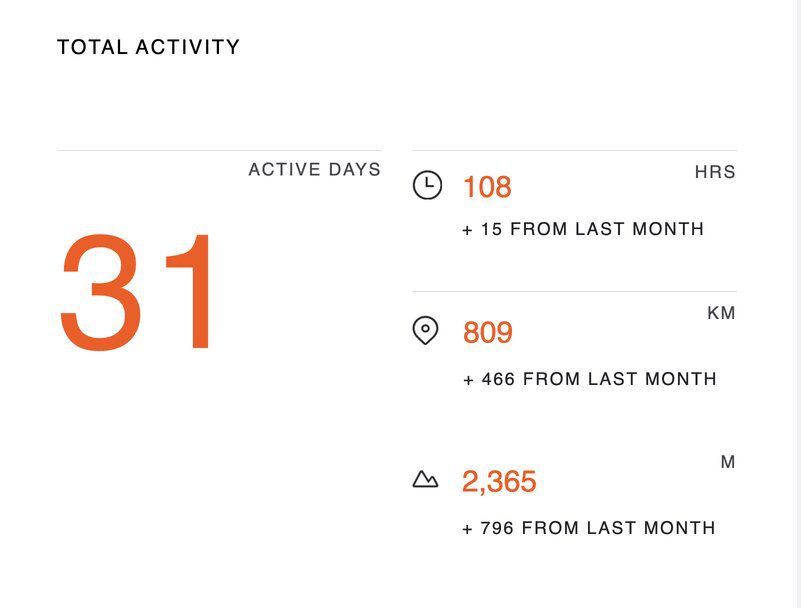Small, seemingly insignificant steps completed consistently over time will create a radical difference.
One of the most exciting things that I do on a daily basis is to exercise and improve in the process. I cross-train, the action or practice of engaging in two or more sports or types of exercise in order to improve fitness or performance in one’s main sport. I practice the following sports activities: Basketball, running, weightlifting, swimming, pickleball, badminton, cycling, tennis, volleyball and badminton. Apart from the fitness and movement goal, I try to stay consistent with practicing each sport as it is a medium for improving daily. For example, I start my daily exercise routine with shooting basketball drills and the more I shoot, the more I know I can get better.

The result from the continuous training, drills, reps, sessions, and laps usually takes time to kick in but with consistency, it eventually shows up. One of my goals for the year was to reduce my marathon finish time drastically from 3 hours 44 minutes to 3 hours 5 minutes (Boston Marathon qualifying time). As a result of this goal, I have been averaging 2-3 hours daily in the gym, and in some months like July; I trained for 108 hours according to my Strava stats. I eventually reduced my marathon time to 3 hours 20 minutes which is a 24 minutes reduction in time. It took time to get to this level of fitness and the daily workout was tough at times but the continuous invisible improvement eventually led to the breakthrough.
As Greek lyric poet Archilochus once said “We don’t rise to the level of our expectations, we fall to the level of our training”. We play the way we train. We get rewarded in public for what we diligently practice continuously in private. Some of the comments have been hearing of late include “You look so fit”, “You look younger than your age”, and “How do you do it” among others. There is really no secret to getting your fitness level up or getting things done in life, you just have to continuously show up day in and day out. “Eighty percent of success is showing up.”, the American filmmaker and Comedian once quipped.
Kaizen 1
Kaizen (改善) is a Japanese word that has two components – Kai 改(Change) and Zen 善 (Good) which translates to “Good Change”, “Change for the Better” or “Continuous Improvement.” It involves making changes for the better, small incremental changes that eventually amounts to extraordinary progress and result. Kaizen was first implemented in Japanese factories and businesses after World War II. It was greatly influenced by American business and quality-management consultants like W. Edwards Deming who worked with Japanese industry leaders after World War II. It is one of the guiding principles of the Toyota Way. Other prominent Kaizen pioneers include Shigeo Shingo (Toyota Production System) and Masaaki Imai (Founder of Kaizen Institute).
Marginal Gains’ – Sir Dave Brailsford 1
The concept of Kaizen inspired Sir Dave Brailsford who was the head coach of the British Cycling team from 2002 to 2013 and he applied the concept of ‘Marginal Gains’ to cycling. As the coach of the team, Great Britain led the cycling medal table at the 2008 and 2012 Olympic Games, winning eight golds at both, while British cyclists won 59 World Championships across different disciplines from 2003 to 2013. In a 2015 Havard Business Review (HBR) interview: How 1% Performance Improvements Led to Olympic Gold he spoke about the influence of Kaizen in his thought process:
HBR: Can you share some examples of your marginal gains approach?
Sir Dave: To give you a bit of background, when we first started out, the top of the Olympic podium seemed like a very long way away. Aiming for gold was too daunting. As an MBA, I had become fascinated with Kaizen and other process-improvement techniques. It struck me that we should think small, not big, and adopt a philosophy of continuous improvement through the aggregation of marginal gains. Forget about perfection; focus on progression, and compound the improvements.
On Marginal Gains:
The whole principle came from the idea that if you broke down everything you could think of that goes into riding a bike, and then improved it by 1%, you will get a significant increase when you put them all together
The aggregation of marginal gains – 1% Improvement 2
Making a choice that is 1 percent better or 1 percent worse seems insignificant in the moment, but over the span of moments that make up a lifetime, these choices determine the difference between who you are and who you could be. Success is the product of daily habits—not once-in-a-lifetime transformations.
If you can get 1 percent better each day for one year, you’ll end up thirty-seven times better by the time you’re done. Conversely, if you get 1 percent worse each day for one year, you’ll decline nearly down to zero. What starts as a small win or a minor setback accumulates into something much more.
1% BETTER EVERY DAY
- 1% worse every day for one year. 0.99365 = 00.03
- 1% better every day for one year. 1.01365 = 37.78
Success is the product of daily habits—not once-in-a-lifetime transformations.
Tiny Habits 3
We live in an aspiration-driven culture that is rooted in instant gratification. We find it difficult to enact or even accept incremental progress. Which is exactly what you need to cultivate meaningful long-term change. People get frustrated and demoralized when things don’t happen quickly. It’s natural. It’s normal. But it’s another way we’re set up to fail. One tiny action, one small bite, might feel insignificant at first, but it allows you to gain the momentum you need to ramp up to bigger challenges and faster progress. The next thing you know, you’ve eaten the whole whale.
“The essence of Tiny Habits is this: Take a behavior you want, make it tiny, find where it fits naturally in your life, and nurture its growth. If you want to create long-term change, it’s best to start small.”
The small invisible progress that is made by staying consistent with our set objectives usually looks insignificant but with time, the result eventually shows. The daily habit forming can be boring and most times, progress is not immediate. As author and motivational speaker, Jim Rohn often said “The simple things that lead to success are all easy to do. But they’re also just as easy not to do.” In his book, The Slight Edge: Turning Simple Disciplines into Massive Success and Happiness, author Jeff Olson shares three reasons “Why we don’t do the easy things” 4. He observed
Reason #1: They’re Easy to Do
The simple things that lead to success are all easy to do. But they’re also just as easy not to do. It’s easy to save a few bucks a day. And easy not to. The successful and unsuccessful both do the same basic things in their lives, day in and day out. Yet the things successful people do take them to the top, while the things unsuccessful people do take them down and out. So what’s the difference? The difference is their awareness, understanding, and application of the slight edge in their life and work.
Reason #2: The Results Are Invisible
The second reason people don’t do the little things that add up to success is that at first, they don’t add up to success. The doomed frog quit paddling in the cream because he’d been doing it as hard as he could, and it obviously wasn’t having any effect. At least, not one he could see. When you make the right choice, you don’t see the results, at least not today. And that is a problem in our push-button, mouse-click, 24-hour-news world. We expect to see results, and we expect to see them now.
Reason #3: They Seem Insignificant
The third reason most people live out their entire lives without ever grasping how the slight edge is working in their lives it that is just seems like those little things don’t really matter. The difference between success and failure is not dramatic. In fact, the difference between success and failure is so subtle, so mundane, that most people miss it.
Successful people are those who understand that the little choices they make matter, and because of that they choose to do things that seem to make no difference at all in the act of doing them, and they do them over and over and over until the compound effect kicks in.
Meditation
- Daily Calm with Tamara Levitt – The Good Stuff
- When caught up in our day-to-day concerns, it is easy to get lost in negativity. Somedays bad news follows bad news, and it seems that nothing is going our way. If problems and pitfalls are all we see, an unhealthy pattern can follow. We can start to see the world through a negative lens, dwelling on what is wrong, but if we choose a more grateful perspective, our difficulties can wake us up to what is right.
- Mindfulness teaches us that even when we are hurt, stressed or worried. There are still good things around us, and the more we turn our attention to the good stuff, the more our outlook becomes steeped in positivity. As we recover from a terrible cold, we might feel a renewed appreciation for our health, and when a friend moves away, we might feel an elevated gratitude for their friendship.
“You will have bad times, but they will always wake you up to the stuff you weren’t paying attention to.”― Robin Williams, Good Will Hunting
Daily Jay with Jay Shetty -Self-Criticism
- For many of us, unfortunately, negative self-talk is natural. We beat ourselves up for making mistakes, we think that we are not good enough, and we compare ourselves harshly to others. We don’t have to have to function this way, we don’t have to pile on the pain instead we can get in touch with our protective instincts and remember that we are worthy of compassion, patience and understanding.
“Treat yourself as your own beloved child.” – Pema Chödrön

Comments are closed.